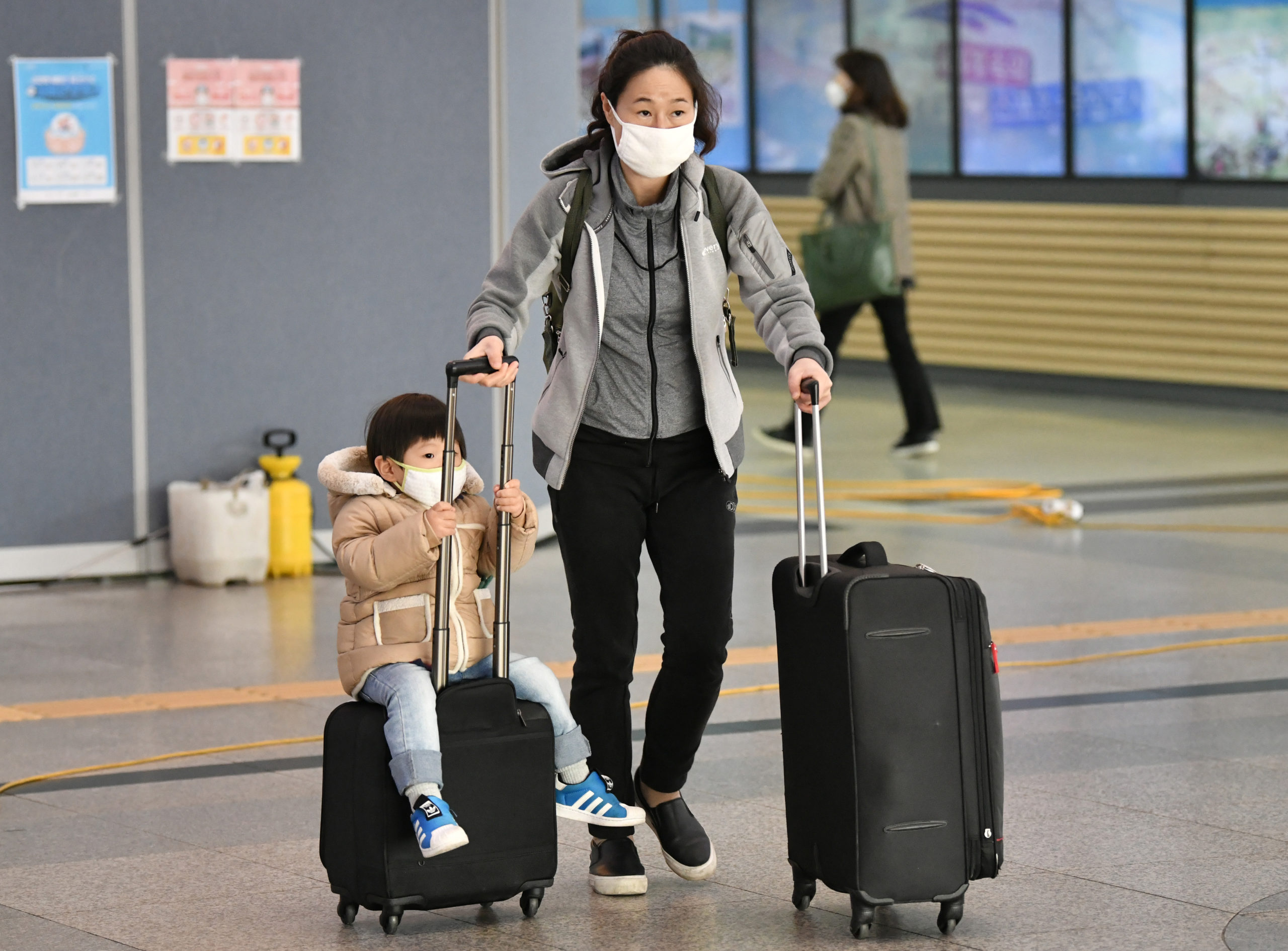
A boy wearing a face mask sits on a suitcase at a railway station in Daegu on February 26, 2020. – An American soldier stationed in South Korea has tested positive for the COVID-19 coronavirus, commanders said on February 26, as the country’s case total jumped again. Meanwhile, South Korean authorities reported 169 new infections, taking the overall national tally to 1,146, by far the largest outside China. (Photo by Jung Yeon-je / AFP)
MANILA, Philippines — Filipinos planning to explore South Korea might have to unpack their luggage for now as the government enforced Wednesday a temporary ban on Filipino tourists going there.
Malacañang said the interim travel restriction was imposed as a protective measure against the coronavirus disease (COVID-19), which cases spiked white rapidly in South Korea in the past few days.
But presidential spokesperson Salvador Panelo said Filipinos residing in South Korea and those who study and work there are exempted from the ban, provided that they sign a declaration signifying their knowledge of the risks of traveling to that country.
“Bawal lahat ng tourist na pupunta roon ng South Korea (All Filipino tourists going to South Korea won’t be allowed to leave) except for the three na binaggit ko (that I mentioned),” Panelo said in an ambush interview.
“The IATF [Inter-agency Task Force] has authorized Filipinos to travel to South Korea, provided that they are permanent residents thereof, leaving for study, or are overseas Filipino workers therein,” Panelo said in the following press statement. “They are to execute and sign a declaration, signifying their knowledge and understanding of the risks involved, prior to their travel.”
Travelers from North Gyeongsang: No entry
IATF on Emerging Infectious Disease has also approved banning travelers from South Korea’s North Gyeongsang province.
“I’d like to announce that the Inter-agency Task Force (IATF) on Infectious Disease met today and it has approved to impose a ban on the entry of travelers coming from North Gyeongsang province of South Korea effective immediately,” Panelo also said in a press briefing earlier Wednesday.
“With respect to other parts of South Korea, the IATF shall conduct a risk assessment of the situation within 48 hours to analyze whether it is necessary to expand the travel ban,” he added.
Meanwhile, Panelo conceded the partial travel ban may further take a toll on the country’s tourism sector given that South Korea is among the top tourist markets of the Philippines.
“It will be affected but as we always say, we have to secure the safety of those coming here and leaving this country to Korea,” Panelo said.
The Department of Tourism (DOT) earlier reported a projected loss of P42.9 billion following the travel restrictions the country has imposed on China and its special administrative regions.
South Korea is the country’s top tourist market with 1.98 million arrivals solely in 2019, followed by China with 1.74 million, according to data from DOT.
As of February 26, 2020, South Korea registered the most number of COVID-19 cases outside China with 1,146 people infected.